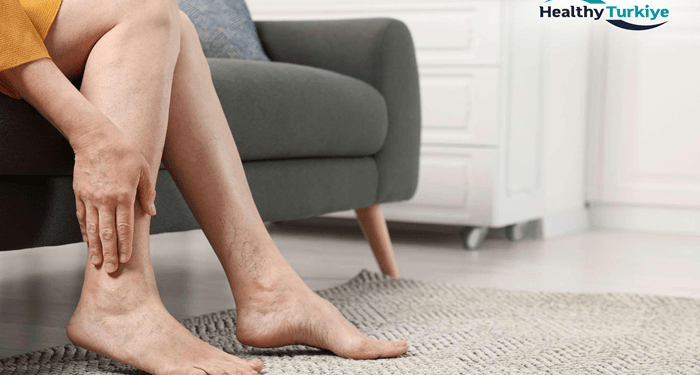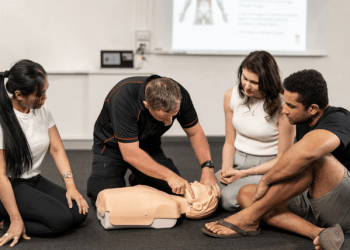Chronic venous insufficiency (CVI) is a condition that occurs when the veins struggle to send blood from the legs back to the heart, leading to various health issues. It can cause pain, swelling, and a host of other complications. In Turkey, where the prevalence of CVI is rising, a variety of treatment options are available, both surgical and non-surgical. This article explores these treatment methods, helping patients understand their options and the best course of action for managing chronic venous insufficiency.
Understanding Chronic Venous Insufficiency
Chronic venous insufficiency treatment in turkey develops when the valves in the veins that help regulate blood flow fail to function properly. This failure can lead to blood pooling in the legs, resulting in symptoms such as:
Swelling in the legs and ankles
Pain or aching
Varicose veins
Skin changes, including discoloration and ulceration
Factors that contribute to the development of CVI include:
Aging
Obesity
Sedentary lifestyle
Family history of venous disease
Previous leg injuries or surgeries
With an increasing awareness of CVI in Turkey, patients have access to a range of treatment options that can help alleviate symptoms and improve quality of life.
Non-Surgical Treatments for Chronic Venous Insufficiency
Non-surgical treatments are often the first line of defense against chronic venous insufficiency. These options are typically less invasive and can provide effective relief for many patients. Common non-surgical treatments include:
Compression Therapy
Compression therapy is a cornerstone of CVI management. It involves wearing specially designed stockings that apply graduated pressure to the legs, helping to improve blood flow and reduce swelling. This method can be particularly beneficial for individuals with mild to moderate symptoms.
Lifestyle Changes
Incorporating lifestyle changes is essential for managing chronic venous insufficiency. Patients are encouraged to:
Exercise regularly: Physical activity, especially low-impact exercises like walking, can help improve circulation.
Maintain a healthy weight: Reducing excess weight alleviates pressure on the veins.
Elevate the legs: Elevating the legs periodically throughout the day can help reduce swelling and discomfort.
Avoid prolonged sitting or standing: Making a conscious effort to change positions can help prevent blood pooling in the legs.
Sclerotherapy
Sclerotherapy is a minimally invasive procedure that involves injecting a solution into varicose veins, causing them to collapse and fade from view. This treatment is effective for small to medium-sized veins and is often performed in a doctor’s office without the need for anesthesia.
Endovenous Laser Therapy (EVLT)
EVLT is a non-surgical procedure that uses laser energy to close off diseased veins. A thin catheter is inserted into the affected vein, and laser energy is delivered, causing the vein to seal shut. This treatment is effective and can be performed on an outpatient basis.
Surgical Treatments for Chronic Venous Insufficiency
When non-surgical methods fail to provide adequate relief or when the condition is severe, surgical options may be considered. Surgical treatments aim to restore proper blood flow and alleviate symptoms associated with chronic venous insufficiency. Common surgical procedures include:
Vein Stripping
Vein stripping is a traditional surgical method that involves removing the affected vein through small incisions. This procedure is effective for eliminating problematic veins but may require a longer recovery time compared to less invasive options.
Valve Repair
In some cases, surgical intervention may focus on repairing the faulty valves within the veins. This can help restore normal blood flow and alleviate symptoms of CVI. However, valve repair is less common and is usually reserved for specific cases.
Venous Bypass Surgery
Venous bypass surgery involves rerouting blood flow around the affected veins. This is typically performed for patients with severe CVI and associated complications, such as ulcers or significant swelling.
Comparing Surgical and Non-Surgical Treatments
When considering treatment options for chronic venous insufficiency, patients often wonder which approach is best suited for their condition. The choice between surgical and non-surgical treatments depends on several factors:
Severity of the Condition
Mild to Moderate CVI: Non-surgical treatments are often sufficient for managing symptoms and improving quality of life. Compression therapy, lifestyle modifications, and sclerotherapy may be all that is needed.
Severe CVI: Surgical treatments may be necessary for patients with significant symptoms or complications, such as ulceration or recurrent thrombosis.
Patient Preference
Individual preferences play a crucial role in the treatment decision. Some patients may prefer to avoid surgery and opt for non-surgical options, while others may seek more definitive surgical solutions to eliminate problematic veins.
Recovery Time
Non-Surgical Treatments: Generally involve minimal recovery time, allowing patients to return to their daily activities quickly.
Surgical Treatments: Typically require longer recovery periods and may involve more post-operative care.
Risks and Complications
Non-Surgical Treatments: Generally have fewer risks, but potential side effects such as bruising or swelling can occur.
Surgical Treatments: Carry inherent surgical risks, including infection, bleeding, and complications related to anesthesia.
Making the Right Choice
Ultimately, the decision between surgical and non-surgical treatments for chronic venous insufficiency should be made in consultation with a healthcare professional. A thorough assessment of the patient’s condition, lifestyle, and preferences is essential to determine the most appropriate treatment plan.
The Role of Healthy Türkiye
In Turkey, healthcare facilities like Healthy Türkiye provide a comprehensive approach to managing chronic venous insufficiency. With a team of experienced specialists, patients receive personalized care that considers their unique needs and circumstances. By offering both surgical and non-surgical treatment options, Healthy Türkiye empowers patients to make informed decisions about their health.
Conclusion
Chronic venous insufficiency can significantly impact one’s quality of life, but various treatment options are available in Turkey to manage the condition effectively. From non-surgical methods like compression therapy and sclerotherapy to surgical interventions such as vein stripping and valve repair, patients can find the right solution for their needs. Healthy Türkiye is dedicated to helping individuals navigate their treatment options, ensuring they receive the best possible care for chronic venous insufficiency and other health concerns. Additionally, as the field of medicine evolves, treatments like meniscus replacement in turkey also reflect the country’s commitment to providing top-notch healthcare solutions.








